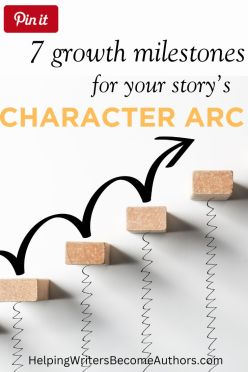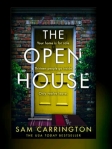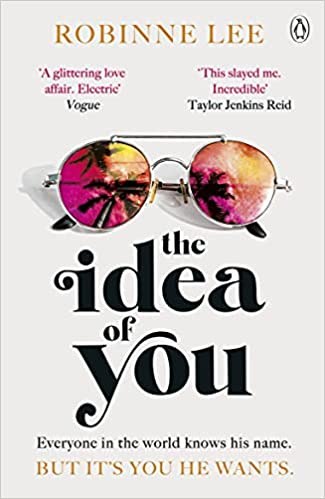
Today’s post is by writer and editor Lisa Cooper Ellison.
Most memoirs involve some kind of loss—a breakup, a displacement, a dismantled dream, the death of someone dearly loved. The more painful the event, the more you’ll want to write about it. But as you revise, you’ll discover that some (or many) of your scenes aren’t needed.
To figure out what’s important, and how to write about it, you need to identify your memoir’s beats. Beats are part of the Beat Sheet tool Blake Snyder created for his book Save the Cat! The Last Book on Screenwriting You’ll Ever Need. These turning points work together to create a propulsive story that largely follows the hero’s journey—though once you understand the concept, you can apply it to other kinds of stories, like the heroine’s journey.
While it can be easy to spot the beats in a memoir with a clear quest, even nonlinear memoirs have them. Identifying both the beats and their functions can help you slant your material so that your book includes the right details in the right place to tell the right story.
Let’s say your book involves a breakup. Early drafts might include your courtship, the moment when you truly committed, the initial cracks in the relationship, the fights that led to the big eruption that ended everything, and all the post-breakup things your ex did that thoroughly miffed you.
This is a great start, but even when the relationship plays a prominent role, it’s likely you’ll need to trim things down. Before cutting too many darlings, or giving your book a full on weed whack, you’ll need to identify your book’s narrative arc, or the arc of internal transformation that happens within the narrator. Creating a beat sheet populated with your book’s key moments can help you identify how your narrator changes and which scenes illustrate this transformation.
If we continue with the breakup example, a beat sheet might uncover that your book is a harrowing tale of abuse where the breakup is a moment of victory that wraps up your book. But maybe you’ll discover that you’re actually writing about something else, and the breakup is either an unfortunate (or welcome) casualty of the primary story, or maybe the breakup is simply a catalyst that launches your journey.
Once your narrative arc is clear, you can decide how much real estate the relationship deserves, where the breakup belongs, and how to frame it so that it serves a specific function. To help you see what this looks like, let’s explore how breakups are framed in four different memoirs. (Warning: spoilers ahead!)
Breakup as ordinary world
Elizabeth Gilbert’s memoir, Eat, Pray, Love, is about what she discovers about life, love, and herself after divorce. Her ordinary world, or the world before the quest begins, is one where a woman realizes she wants out of her marriage. Her divorce is important, because it sets the stage for what comes next, but it’s not the story, nor is it the catalyst inviting her on her journey.
In one of the book’s opening scenes, Elizabeth presses her head to the floor and realizes she doesn’t want to be married any more. Then, within the first 35 pages of her memoir—during which she gets divorced and has an unhealthy relationship with another man—she decides to travel to Indonesia after being invited by a medicine man (the story’s catalyst). Little of Gilbert’s marriage or divorce makes it into the book.
But what if the relationship takes on a larger role? How might that change the location and slant the breakup takes?
Breakup as opening for something new
According to Blake Snyder, your midpoint can either be an up moment where “the hero seemingly peaks” or a “low point where the world collapses around them.”
Suzette Mullen’s new memoir, The Only Way Through Is Out, is about risking it all to become who you truly are. It’s an identity story where one of her primary conflicts is whether to stay in her 30-year marriage. The decision to leave happens around the midpoint. Initially, it seems like a victory that makes room for her to pursue what she hopes will be a more authentic life. Then, a discovery about her ex occurs at the All Is Lost moment, which sends her life into a tailspin.
Breakup as unraveling
Divorce also plays a prominent role in Safekeeping by Abigail Thomas, a memoir about her second husband. Many writers hope to emulate this book because of the rules it breaks around chronology and point of view. But the story works precisely because it includes a whiff of narrative arc around her relationship with Husband Number Two. In fact, the book’s short vignettes largely chronicle their courtship and marriage, divorce, and reconciliation. Because the whiff of arc exists, it’s possible to identify the book’s beats.
The breakup in Safekeeping also takes place around the midpoint, but unlike Suzette’s false victory, it’s a deep low that Abigail briefly, yet specifically, describes. She stops cleaning, caring, or wearing anything other than her nightgown. Her children scatter. On days when she’s supposed to look for work, she smokes cigarettes, drinks coffee, and wanders, feeling completely lost. It’s so lonely, she welcomes back the raccoons she’d once complained about.
Breakup as relief
Sometimes the breakup is the victory that wraps up the book. When that happens, you must decide if it’s the finale or if it’s setting the stage for it.
In Carmen Maria Machado’s memoir, In the Dream House, the narrator spends most of the story pretzeling herself into a shape she hopes her partner will love. The book is filled with push/pull moments where the narrator is rejected only to be sucked back into this toxic relationship’s vortex. At the All is Lost moment, the woman from the Dream House breaks things off with the narrator, but then she recants only to say it was all a mistake. Or was it? The narrator reels, knowing the relationship is poison yet she feels powerless to resist its sweetness. In the Break into Three—or the point where the hero figures out how to solve her problem—she cuts all contact, making the breakup permanent. It’s not the book’s ending, but it’s where the narrator’s healing begins.
You can apply this work to your memoir by following these steps:
- Learn all of Blake Snyder’s beats, such as the midpoint, “All Is Lost” or “Break Into Three” (here is a brief summary of all beats)
- Identify the scenes that serve as beats in your memoir
- Use your scene list to determine your narrative arc
- Slant key scenes so they do their beat’s primary work
- Scrap anything that doesn’t belong
Learning to do this can streamline your revision process. As you complete this work, you’ll feel more confident about what truly belongs in your memoir, and more importantly, you’ll know which details matter most.
Lisa Cooper Ellison is an author, speaker, trauma-informed writing coach, and host of the Writing Your Resilience podcast. She works and writes at the intersection of storytelling and healing, and uses both her personal experiences and clinical training to help writers turn tough experiences into art. Lisa’s essays and stories have appeared on Risk! and in The New York Times, HuffPost, Hippocampus Literary Magazine, and Kenyon Review Online, among others.






